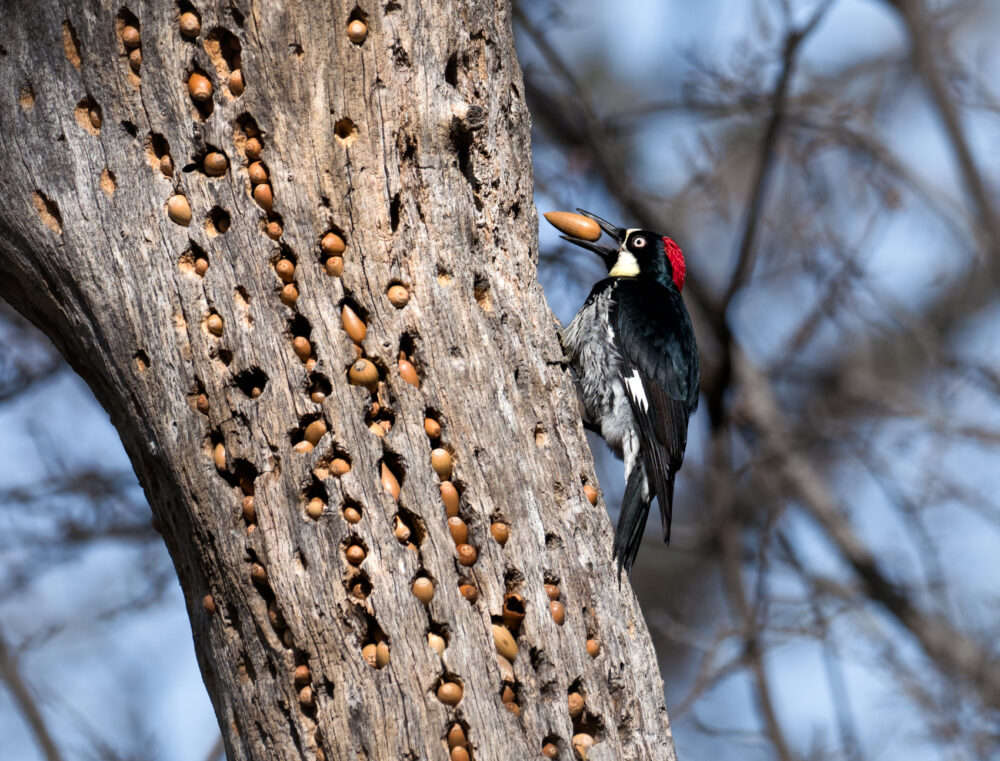We have much more to do and your continued support is needed now more than ever.
A Quest to See the Largest Terrestrial Salamander in the World
A note from Beth: California Conservation Corp crew members and their leader John Griffith have embraced NWF’s Certified Wildlife Habitat program and certified their Ukiah campus, with plans of doing more sites across California. I recently visited with the crew and became so impressed with their dedication to helping wildlife that I offered them my Wildlife Promise blog space if they would write about their experiences. This first story, about the quest for the Pacific Giant Salamander, will have you wanting to encounter one of these slimey but cool creatures.
 Hello, my name is Jacob Gooding. I am a twenty-year-old corps member who does ecological restoration with the California Conservation Corps in Ukiah, California. It was a solid three weeks into our salmon habitat restoration season when my supervisor John Griffith informed me that Pacific giant salamanders thrived in the creeks we work in. I’d never seen them, so I started my quest to discover one immediately. Who doesn’t like hunting for a slimy creature that hides under rocks and/or in a creek?
Hello, my name is Jacob Gooding. I am a twenty-year-old corps member who does ecological restoration with the California Conservation Corps in Ukiah, California. It was a solid three weeks into our salmon habitat restoration season when my supervisor John Griffith informed me that Pacific giant salamanders thrived in the creeks we work in. I’d never seen them, so I started my quest to discover one immediately. Who doesn’t like hunting for a slimy creature that hides under rocks and/or in a creek?
I was armed with a field guide that gave me clues on where to look and facts that made me want to find one even more. I was especially intrigued when I read how unique Pacific Giant Salamanders are—even among California’s other interesting amphibians. These salamanders can be neotenic: giving them the ability to forego metamorphosis and remain in the larval stage with all reproductive perks of adulthood. And they are the largest terrestrial salamanders in the world!
When I finally found one, I was deep in Northern California’s Jackson State Demonstration Forest with two of my fellow corps members: shirtless with snorkles and masks, eagerly standing before the frigid creek, motivated to finally find the elusive amphibian. In every promising pool, we were met by dozens of new and exciting friends: rough-skinned newts, steelhead trout, caddis fly larvae, and red-legged frogs. But not one salamander!
It was getting too dark and cold to continue, but I insisted on one last dive of the day. I took a deep breath and plunged into the bitterly cold but promising pool. Peering out from under a log was a majestic “giant.” It was splattered with blued marble finish. All at once the other creatures in the water seemed to have vanished. Nothing else mattered. This particular salamander was super calm and practically wiggled right into my hand. So without hesitation, I grabbed him and yelled out to my co-workers, “I caught one!” They ran over to share in the excitement.
[youtube]http://www.youtube.com/watch?v=XfY4vBY3gJ8[/youtube]
This Pacific Giant happened to be neotenic! I could tell due to the fact that he still had his larval gills, but was the size of the adults: about 9 inches long (though they can be up to twelve inches). I never knew amphibians could get that size! His round goldish-brown eyes popped with contrast to his mottled skin. It was a moment I wanted to savor forever. I knew that this salamander played a large ecological role in this system, so I released him back into his slippery empire. At that instant, I realized that this is how the relationship between humans and nature should really be. In touch.

![]() Want to make a difference for wildlife in your yard, schoolyard, church, business, neighborhood, or community? Check out the NWF Certified Wildlife Habitat® program website or Facebook page.
Want to make a difference for wildlife in your yard, schoolyard, church, business, neighborhood, or community? Check out the NWF Certified Wildlife Habitat® program website or Facebook page.
Follow NWF California on Facebook for more great wildlife stories and photos from across the Golden State!






















